#animal welfare a
Explore tagged Tumblr posts
Text
I think it's a common misconception that domesticating animals is somewhat like enslaving them. It really is more of a symbiotic relationship. No wild animal would have willingly put up with early humans if they didn't get something out of it. Wolves wouldn't have stayed with us and become dogs if they weren't getting food and safety out of it. Many large herbivores that are now domesticated could and would have easily trampled their early human captors or broken their enclosures open if they didn't have a reason to stay. Sometimes individual animals still do if we don't give them what they need.
The animals that have stayed with us for thousands of years have evolved to cooperate with us better. Dogs have additional facial muscles around their eyes that wolves lack in order to mimic human facial expressions. Sheep grow their wool perpetually while their wild counterparts don't because a bigger fleece means they're more likely to be allowed to breed and be kept around. Domestic dairy cows produce much more milk than wild bovine species and domestic hens lay more eggs. Do you know how energy costly producing eggs or milk is for an animal? It's pretty intense! They wouldn't be able to do that if we hadn't given them the food and safety from predators and the elements to.
And we really need to show these animals respect and gratitude for what they give us by taking excellent care of them. They gave up a lot to be with us, often including the means to take care of themselves in the wild. That's a huge reason why I'm not against using animal products, but I hate factory farming. They are still living, breathing creatures with needs and feelings. They deserve a comfortable life and, when the time comes, a humane death.
50K notes
·
View notes
Text
Not to be a killjoy (though it is what I do best) but the unsafe and rough handling of a baby Pygmy hippo in a pretty substandard Thai zoo being meme-ed into something funny and cute really shows just how much groupthink plays into public perception of animal welfare.
Moo Deng shows avoidance, threat displays and stress around her keepers that are constantly man-handling her, blasting her with a hose and harassing her. The enclosure is mostly concrete, which is horrible for her soft feet. There looks to be some substrate but there doesn’t seem to be any areas for wallowing or deep water wading.
There’s also very easy access of this hippo to the public with no places to hide. I’d love if someone could shed more light on the enclosures but from what I’ve seen it’s not great.
Also the free contact and forcing into tubs that the keepers do is only going to create an avoidant and potentially aggressive and dangerous Pygmy hippo.
But the public happily overlook that because she’s cute. It’s a similar attitude with seals too.
Stop rewarding bad husbandry with clout. Baby animals deserve agency and respect and to grow up without getting harassed and feeling the need to defend themselves constantly.
33K notes
·
View notes
Text
My favorite signage from the NEW Zoo in northern Wisconsin.
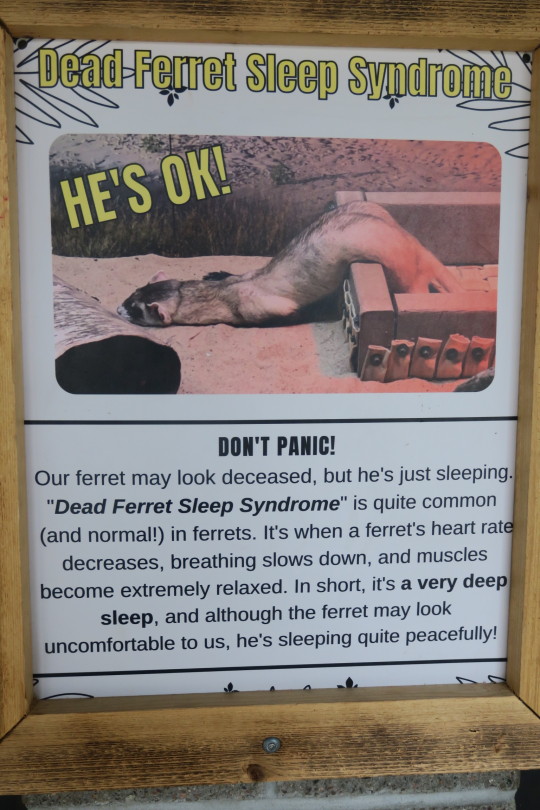
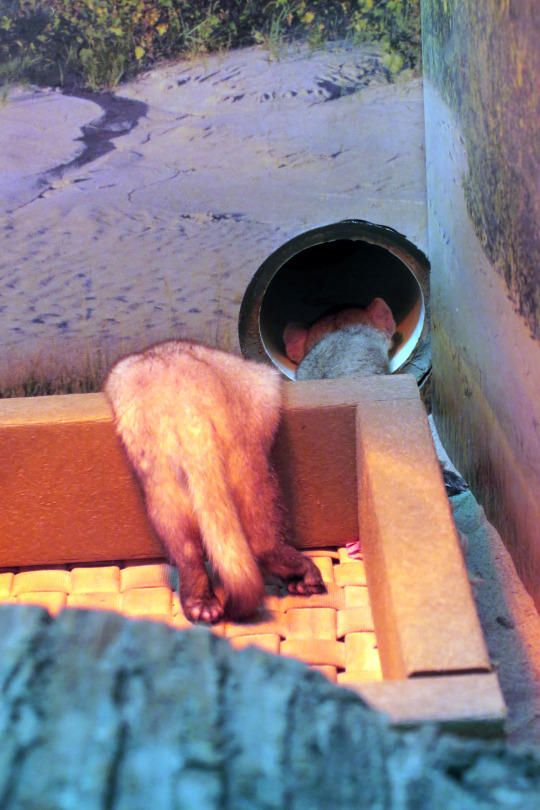
27K notes
·
View notes
Text

Cat people sure do love making it everyone else's responsibility to keep their outdoor cat safe.
9K notes
·
View notes
Text
A study that just came out demonstrates that outdoor cats are known to prey on over two thousands species of wild animal, from mammals to birds to insects. That includes 347 species that are endangered, threatened or otherwise of concern, and they've been a key factor of the permanent extinction of over 60 species. And while cats may not always bring home what they catch, chances are if your cat is allowed to roam unsupervised outside, they're killing your local wildlife.
Why is this so important? Worldwide, wild animal populations have decreased in number by 69% in the past fifty years; that means that in my lifetime (born in 1978), the sheer number of wild animals in the world has been decreased by over half. Even "common" wild species are less numerous than before. While habitat population is the single biggest cause of species endangerment and extinction overall, outdoor and indoor/outdoor cats are a significant cause as well. In fact, they are the single biggest cause of human-caused mortality in wild birds.
Most importantly, it's very, very simple to fix this problem: keep your cats indoors, and spay and neuter them. If your cat is bored, they need more enrichment, and there are plenty of ways to make your home more exciting for them, from bringing home cardboard boxes for them to explore, to playing with them more often. If you want your cat to get some outdoor enrichment, leash train them (yes, it can be done!) If you have the space and resources, build them a catio where they can be safe from outdoor dangers like predators and cars, while also keeping local wildlife safe from them.
If you just give into their whining and pawing at the door, then they know that that's what they have to do to get their way; I know it's a tough transition, but it's worth it in the end for everyone involved. Cats are domesticated, which means they are not native anywhere in the world; there are exactly zero ecosystems in which they belong, save for the safety of your home. It is your responsibility to give them an enriching environment without taking the shortcut of letting them go wreak havoc outside.
#cats#outdoor cats#feral cats#nature#wildlife#animals#ecology#environment#conservation#science#scicomm#birds#endangered species#extinction#domesticated animals#domestication#biology#animal behavior#animal welfare
8K notes
·
View notes
Text
As someone who works w animals “animals are not mindless automatons, they actually do have feelings and individuality and are capable of feeling acute physical and emotional pain and of forming deep attachments with other animals and people” and “animals are not human infants and have a limited capacity to communicate with humans so you have to familiarize yourself with their boundaries bc if they feel threatened or overstimulated they will fall back on their basic instincts and if you fuck around you are going to find out” are statements that can and should coexist
#why is this so hard for ppl to understand#yes they’re capable of genuine love and empathy#no that doesn’t come with an endless supply of patience for human bs or a complex understanding of human motivations#bc they aren’t just here for human consumption they’re literally vibing#animal rights#animal welfare#animal care#animal exploitation
50K notes
·
View notes
Text
anthropomorphizing animals is cool when people draw frogs in hats fishing and living in a cute little house. Not so cool when people say zoos shouldn't exist because they don't understand that animals aren't people
3K notes
·
View notes
Text
honestly people are way more ignorant about the welfare of the animals than they think they are
animal rights activists are even worse regarding that, because instead of actually learning about what an animal needs and how it behaves they rely solely on how they *think* animals feel and need
and it's the reason why the public views feeding and interacting with wild animals as "being good and kindhearted :) " and keeping animals in zoos as "poor animals suffering in cramped cages >:( "
and it kills animals
#i have to gather more energy to properly continue#i want to write about this but thoughts aren't organised at all#animal welfare#animal behavior
2K notes
·
View notes
Photo

24K notes
·
View notes
Text

pulling the pin on this grenade of a meme and sprinting for the nearest shelter
10K notes
·
View notes
Text


Adding a tiny piece of text saying “they’re not pets guys” doesn’t mean this isn’t HORRIBLY irresponsible “science” communication. Multiple studies have shown that images and videos like this can and do encourage the exotic pet trade.

This is NOT how you interact with animals that you will send back to the wild.
The fact that she has 1.3 million followers is disturbing
662 notes
·
View notes
Text
Btw if you want an example of actually cute and appropriate handling of a baby hippo in an accredited zoo with trained keepers, there’s always Fiona the Hippo at Cincinnati Zoo!
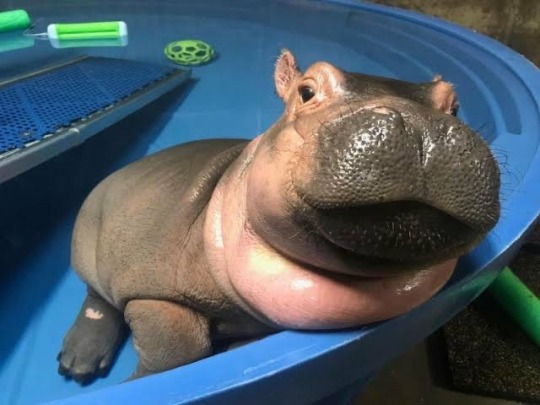

She was born premature and had to be hand raised initially

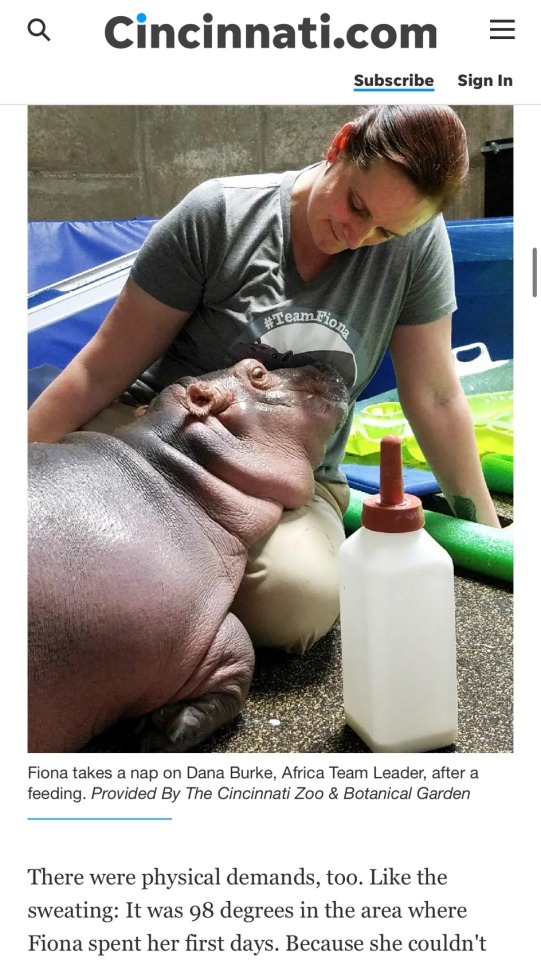
Fiona felt very safe with her keepers and she would regularly snuggle with them and snooze on their laps. They had to monitor her 24/7 and take feedings in shifts - and it was very uncertain whether she would even survive!
While you might say that it’s hypocritical to support free contact in one situation and not another, this is a situation where free contact was very much okay. They had to support Fiona like this as she was regularly needing medical intervention and needed to be constantly monitored around the clock.
What’s the difference between Fiona and Moo Deng’s situation? Agency and respect. Fiona was never harassed for views or forced into situations she didn’t want to be in.
The content they made with her was showing the process of hand raising a premature baby hippo. Even when they picked her up to put her in her pool she was never madly thrashing to get away.
The goal was always to transition her to be completely hands off and be with her mother Bibi. And her habitat is species appropriate with deep water for swimming in.

She was able to be reintroduced to her mother and grow up engaging in appropriate social behaviours in an enriching and species appropriate habitat.
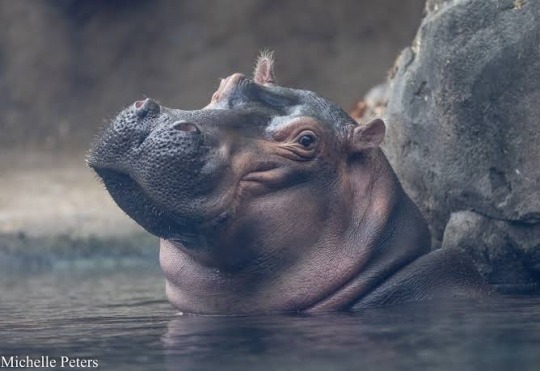
And she’s now 7 years old and still thriving!
19K notes
·
View notes
Text
average United States contains 1000s of pet tigers in backyards" factoid actualy [sic] just statistical error. average person has 0 tigers on property. Activist Georg, who lives the U.S. Capitol & makes up over 10,000 each day, has purposefully been spreading disinformation adn [sic] should not have been counted
I have a big mad today, folks. It's a really frustrating one, because years worth of work has been validated... but the reason for that fucking sucks.
For almost a decade, I've been trying to fact-check the claim that there "are 10,000 to 20,000 pet tigers/big cats in backyards in the United States." I talked to zoo, sanctuary, and private cat people; I looked at legislation, regulation, attack/death/escape incident rates; I read everything I could get my hands on. None of it made sense. None of it lined up. I couldn't find data supporting anything like the population of pet cats being alleged to exist. Some of you might remember the series I published on those findings from 2018 or so under the hashtag #CrouchingTigerHiddenData. I've continued to work on it in the six years since, including publishing a peer reviewed study that counted all the non-pet big cats in the US (because even though they're regulated, apparently nobody bothered to keep track of those either).
I spent years of my life obsessing over that statistic because it was being used to push for new federal legislation that, while well intentioned, contained language that would, and has, created real problems for ethical facilities that have big cats. I wrote a comprehensive - 35 page! - analysis of the issues with the then-current version of the Big Cat Public Safety Act in 2020. When the bill was first introduced to Congress in 2013, a lot of groups promoted it by fear mongering: there's so many pet tigers! they could be hidden around every corner! they could escape and attack you! they could come out of nowhere and eat your children!! Tiger King exposed the masses to the idea of "thousands of abused backyard big cats": as a result the messaging around the bill shifted to being welfare-focused, and the law passed in 2022.
The Big Cat Public Safety Act created a registry, and anyone who owned a private cat and wanted to keep it had to join. If they did, they could keep the animal until it passed, as long as they followed certain strictures (no getting more, no public contact, etc). Don’t register and get caught? Cat is seized and major punishment for you. Registering is therefore highly incentivized. That registry closed in June of 2023, and you can now get that registration data via a Freedom of Information Act request.
Guess how many pet big cats were registered in the whole country?
97.
Not tens of thousands. Not thousands. Not even triple digits. 97.
And that isn't even the right number! Ten USDA licensed facilities registered erroneously. That accounts for 55 of 97 animals. Which leaves us with 42 pet big cats, of all species, in the entire country.
Now, I know that not everyone may have registered. There's probably someone living deep in the woods somewhere with their illegal pet cougar, and there's been at least one random person in Texas arrested for trying to sell a cub since the law passed. But - and here's the big thing - even if there are ten times as many hidden cats than people who registered them - that's nowhere near ten thousand animals. Obviously, I had some questions.
Guess what? Turns out, this is because it was never real. That huge number never had data behind it, wasn't likely to be accurate, and the advocacy groups using that statistic to fearmonger and drive their agenda knew it... and didn't see a problem with that.
Allow me to introduce you to an article published last week.
This article is good. (Full disclose, I'm quoted in it). It's comprehensive and fairly written, and they did their due diligence reporting and fact-checking the piece. They talked to a lot of people on all sides of the story.
But thing that really gets me?
Multiple representatives from major advocacy organizations who worked on the Big Cat Publix Safety Act told the reporter that they knew the statistics they were quoting weren't real. And that they don't care. The end justifies the means, the good guys won over the bad guys, that's just how lobbying works after all. They're so blase about it, it makes my stomach hurt. Let me pull some excerpts from the quotes.
"Whatever the true number, nearly everyone in the debate acknowledges a disparity between the actual census and the figures cited by lawmakers. “The 20,000 number is not real,” said Bill Nimmo, founder of Tigers in America. (...) For his part, Nimmo at Tigers in America sees the exaggerated figure as part of the political process. Prior to the passage of the bill, he said, businesses that exhibited and bred big cats juiced the numbers, too. (...) “I’m not justifying the hyperbolic 20,000,” Nimmo said. “In the world of comparing hyperbole, the good guys won this one.”
"Michelle Sinnott, director and counsel for captive animal law enforcement at the PETA Foundation, emphasized that the law accomplished what it was set out to do. (...) Specific numbers are not what really matter, she said: “Whether there’s one big cat in a private home or whether there’s 10,000 big cats in a private home, the underlying problem of industry is still there.”"
I have no problem with a law ending the private ownership of big cats, and with ending cub petting practices. What I do have a problem with is that these organizations purposefully spread disinformation for years in order to push for it. By their own admission, they repeatedly and intentionally promoted false statistics within Congress. For a decade.
No wonder it never made sense. No wonder no matter where I looked, I couldn't figure out how any of these groups got those numbers, why there was never any data to back any of the claims up, why everything I learned seemed to actively contradict it. It was never real. These people decided the truth didn't matter. They knew they had no proof, couldn't verify their shocking numbers... and they decided that was fine, if it achieved the end they wanted.
So members of the public - probably like you, reading this - and legislators who care about big cats and want to see legislation exist to protect them? They got played, got fed false information through a TV show designed to tug at heartstrings, and it got a law through Congress that's causing real problems for ethical captive big cat management. The 20,000 pet cat number was too sexy - too much of a crisis - for anyone to want to look past it and check that the language of the law wouldn't mess things up up for good zoos and sanctuaries. Whoops! At least the "bad guys" lost, right? (The problems are covered somewhat in the article linked, and I'll go into more details in a future post. You can also read my analysis from 2020, linked up top.)
Now, I know. Something something something facts don't matter this much in our post-truth era, stop caring so much, that's just how politics work, etc. I’m sorry, but no. Absolutely not.
Laws that will impact the welfare of living animals must be crafted carefully, thoughtfully, and precisely in order to ensure they achieve their goals without accidental negative impacts. We have a duty of care to ensure that. And in this case, the law also impacts reservoir populations for critically endangered species! We can't get those back if we mess them up. So maybe, just maybe, if legislators hadn't been so focused on all those alleged pet cats, the bill could have been written narrowly and precisely.
But the minutiae of regulatory impacts aren't sexy, and tiger abuse and TV shows about terrible people are. We all got misled, and now we're here, and the animals in good facilities are already paying for it.
I don't have a conclusion. I'm just mad. The public deserves to know the truth about animal legislation they're voting for, and I hope we all call on our legislators in the future to be far more critical of the data they get fed.
#big cats#tiger king#my research#news#big cat public safety act#animal welfare#big cat welfare#legislation and regulation#vent post#long post#crouchingtigerhiddendata#more on the problems with the bill in the future
7K notes
·
View notes
Text


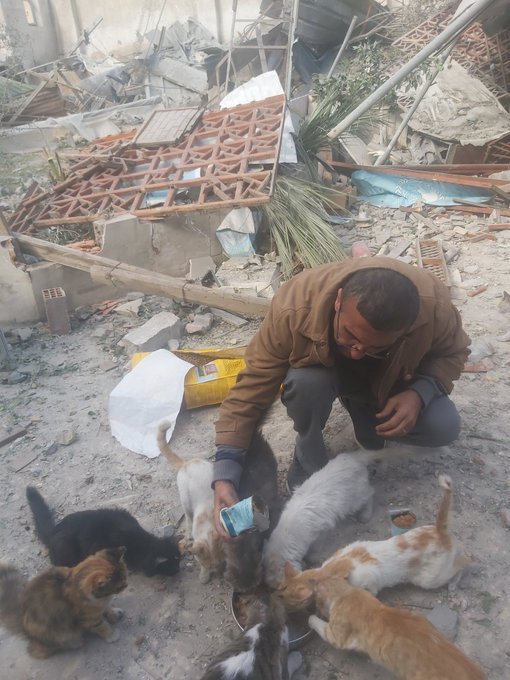
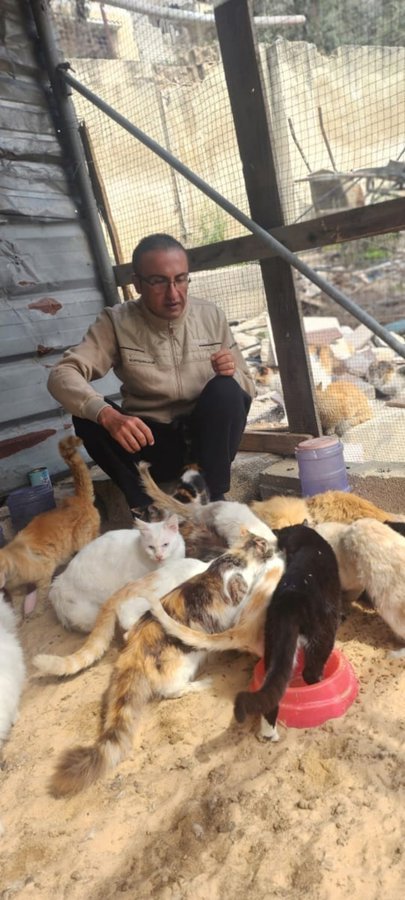
#yemen#jerusalem#tel aviv#current events#palestine#free palestine#gaza#free gaza#news on gaza#palestine news#news update#war news#war on gaza#support palestine#animal rights#animal welfare
2K notes
·
View notes
Text
Okay, I know people as a general rule tend to not care about invertebrates as much as cute, fuzzy mammals, but this is a must-read if you care about animal welfare. The short version is that horseshoe crab blood has been used for decades in medicine as a way to test whether something is truly sterile; the blood clots in the presence of bacteria. Since then millions of horseshoe crabs have been captured and drained of blood, even though a synthetic alternative was developed a few years ago.
They go through a pretty brutal experience in the process. They're caught by fishermen who often throw them by their tails into a pile in the open air, and they're then trucked to a bleeding facility where they're strapped down and their blood is removed with needles jabbed directly into their hearts. Over half their blood may be taken, after which they're supposed to be returned to the ocean. However, it's likely many of them never make it back, instead turned into fish bait and sold by the same fishermen who caught them in the first place.
Apart from the fact that this is a horrific thing to put any animal through, the attrition due to fatalities has put a serious dent in horseshoe crab numbers. This is compounded by massive habitat loss, pollution, and the capture of horseshoe crabs as food, particularly as the females of one species are considered a delicacy. And other animals that rely on horseshoe crabs are suffering, too. The American rufa subspecies of the red knot, a medium-sized shorebird, is critically endangered as the horseshoe crab eggs it must have in order to successfully complete migration have become increasingly scarce, and it is likely the bird will become extinct if trends continue.
While there are guidelines for medical horseshoe crab harvest, they're considered optional. The few laws that exist are poorly enforced. Short of a complete ban on horseshoe crab blood in favor of the synthetic alternative, these animals are in very real danger of going extinct after a history spanning over 400 million years on this planet.
Thankfully, this article is not the first to bring forth the issues surrounding horseshoe crab harvest. Here are a few resources for further information and action (US based, though horseshoe crabs are threatened throughout their entire range):
Horseshoe Crab Conservation Network - https://horseshoecrab.org/conservation/
Wetlands Institute - https://wetlandsinstitute.org/conservation/horseshoe-crab-conservation/
Horseshoe Crab Recovery Coalition - https://hscrabrecovery.org/
#animal welfare#animal cruelty#cw animal cruelty#animal suffering#horseshoe crabs#invertebrates#wildlife#animals#environment#conservation#endangered species#extinction#nature#medicine#science#scicomm#science communication
8K notes
·
View notes
Text
it’s honestly scary seeing how popular raw feeding for cats and dogs is becoming. for so long dogs and cats weren’t coming down with nutrient deficiencies because of commercially available pet food and now they’re making a comeback, plus people have literally died from the diseases transferred by raw feeding… it’s not surprising, though, that raw feeding is growing in popularity considering how popular anti-science movements for humans are right now too. like you can literally go into a pet store and see signs plastered all over claiming that raw is the best when there’s not a shred of evidence for that. it’s so ironic that pet store employees will tell you that the eVil vEtS iN bEd WiTh BiG kiBbLe only recommend a certain food because they get paid to do so and then in the very next breath recommend an obscenely expensive raw food that obviously gives the store a pretty big profit margin. i get why people might not trust the pet food industry but you don’t have to feed raw, you can hire an actual veterinary nutritionist (not just some raw guru online with a “nutrition certificate”) to formulate a homecooked recipe for you
3K notes
·
View notes